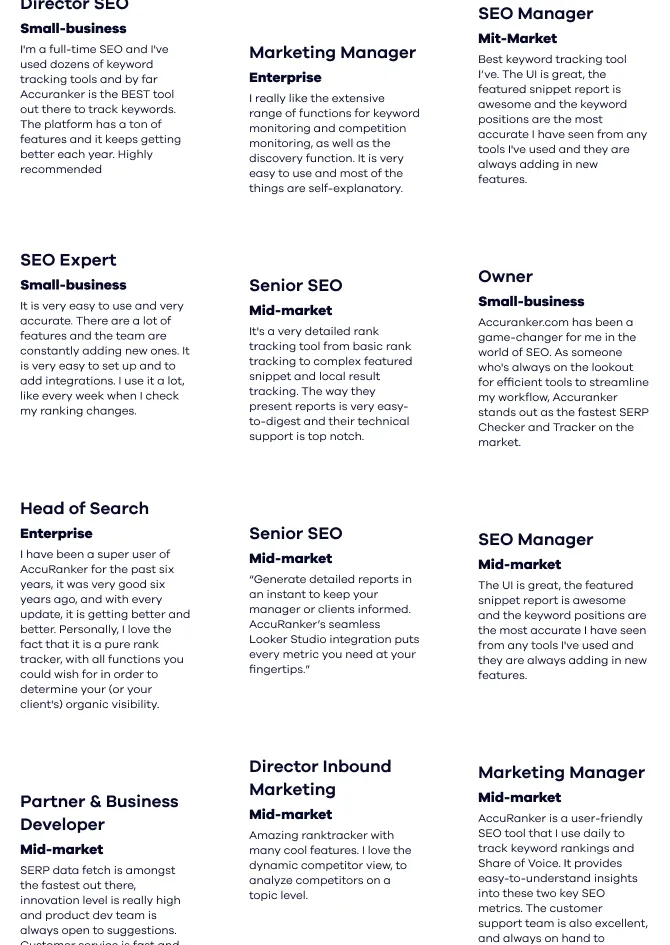How To Add Keywords for SEO
IntermediateWebsite Keywords Analysis – Where to Put Keywords for SEO? How to Add Keywords to Website?

How to Add Keywords for SEO
One of the most significant parts of SEO, or search engine optimization, is keyword management. Essentially, including keywords in a webpage makes it more likely that the page will appear when someone uses that keyword in an online search. Each search engine has a unique algorithm which determines what pages are displayed. While this does mean that the value of keywords does vary depending on the search engine, every modern search engine uses keywords to some extent.
For this reason, it is always a good idea to manage the keywords of your online content. The first step you should take is to research which keywords would be most effective. If you do not have a good understanding of your audience’s needs, then you may use completely different phrasing or terminology when choosing keywords, meaning your site will not appear when people search for your products or services.
How Do You Add SEO Keywords to Your Website
1. Review what similar businesses used for their keywords
You might find inspiration by reviewing the content created by other businesses. It is not a good idea to use the exact same keywords, because anyone who searches for them will find your competitor rather than you. It is still a great way to start your research, however.
2. Use keyword analysis software
There is software out there that can tell you what people searched for to find a particular website. This can guide your research, but it is also a way to evaluate how effective your SEO keywords are so far.
3. Pay an SEO expert to do market research for you
SEO is an enormous field, so there are professionals out there that can help you. Due to the size of this field, you can pick an SEO company that suits your needs. Additionally, since it is entirely online, you do not necessarily need to select a local SEO company.
4. Check suggested searches on popular search engines
When you use a search engine, it will often give you suggestions. These suggestions are always things that many people have searched for. This is a great way to see the most popular searching trends.
How to Add Keywords to Your Website for SEO
Most people assume that there is just one kind of keyword. It is true that the most straightforward kind of keyword is the type that appears in body text of content, but this is far from the only or most important kind. To really put your search engine optimization as far as possible, you need to incorporate many different types of keywords in many different locations.
- Title Tag
Every webpage has a title tag in the meta information. This is what appears on the search results page. First of all, you should target your audience with your title tag to attract more visitors. However, you should also include your keyword in the title tag, as most search engines value these keywords highly.
- Body Text
Experts suggest dedicating about 3 percent of your body text to your keyword. This means if a page has 1,000 words on it, the keyword should be used 30 times. Having significantly more or less than this amount will hurt your search engine ranking, as it may be marked as spam or seen as unrelated.
- Meta Description
Another piece of the meta information is the meta description. This is the short description that appears below the title tag on the results page. For all the same reasons as the title tag, you should include your keywords in the meta description.
- URL
Google and other search engines look at the URL of webpages, and you can slip a keyword in here as well. The subpages on your site have a pathway in the URL, which follows the main host site. This is the best part of the URL to include it.
- Meta Keywords
The final part of the meta information is the meta keywords. Unlike the title tag and meta description, visitors will not see the meta keywords. This makes them perfect for including keywords which you do not want anyone seeing, such as keywords with negative associations. You can also target searches with misspellings without including these misspellings on your page.
- Images
Keywords appearing in an image does not contribute to SEO, but every image has an internal description that viewers do not see. Google and other search engines are able to read even this information and judge a page accordingly.
- Links
Most search engines assign a huge value to pages that are part of a large web of pages interconnected by hyperlinks. These pages are even more valuable when different parts of the web are from different sources. Additionally, keywords used as the anchor text for the connecting hyperlinks are more valuable than ordinary keywords.
How to Add SEO Keywords in Yoast
One of the tools available to help content creators get their search engine optimization up is called Yoast. This tool is exclusively for use with WordPress, which makes it particularly helpful for writing blog posts. Even if your website is not based in WordPress, you may consider having a blog alongside your website which you can post to on occasion.
Yoast is not a stand-alone tool. Instead, it is a plugin, working with WordPress, which itself is a site for hosting blogs. When you have Yoast installed, a new tab will appear underneath the interface for writing your blog post. This tab is specifically for helping you manage the SEO of your post. There is a field for you to enter your primary keyword, which Yoast calls the “focus keyword.” After entering it, it will analyze it a bit, telling you how well it may perform, whether it is too long or short, and other information. Yoast also has an excellent feature that suggests keywords for you. These suggestions actually come straight from the suggestions on Google, so you can still find them without installing Yoast.
What This Plugin Can Do for You?
Yoast also allows you to easily manipulate the title tag and meta description of each page. Refers to the meta description as the “snippet.” The program automatically inserts the first few sentences as the meta description, but you should always edit this to be more appropriate and to include your keyword. Yoast used to allow users to edit the meta keywords easily, but this feature has been removed due to meta keywords being perceived as worthless.
It is true that meta keywords are much less valuable than they once were, but they do still have a function and contribute a minimal amount to SEO. If you want to squeeze as much optimization out of your page as possible, it may be frustrating that Yoast does not help you write your meta keywords. Finally, Yoast has a few other features outside of SEO, analyzing your blog post for readability and a few other aspects.
How to Add SEO Keywords in Blogger
If you are using Blogger to write your online content, you may find that the process is a little less intuitive. You can, of course, still add keywords to anything you write, but there is very little infrastructure in place to make it easier or automatic.
First things first, you do not need to do anything special to add keywords to the body text of your blog posts. You can simply include the keywords in normal writing. This is also the case for using keywords as the anchor text for hyperlinks. The process for some of the other types of keywords is a little more involved.
To put a keyword in the URL, you need to create a custom URL for your post. Blogger does have the ability to host third party domains. You must first register a domain, and then you can enter it in the blog settings. This turns Blogger into a tool for creating content for an independent website. Once you create your customer URL, you can insert keywords into it.
To put a keyword in image information, you simply have to include the keyword in the title text or alt text. This is one aspect that Blogger makes incredibly simple. There are two fields to enter your text when you upload an image.
To put a keyword in the meta information, you will need to access the HTML code. There is a setting to access the HTML code in the theme tab of the dashboard.
How to Add SEO Keywords in HTML
If you are not using a blog or site creation program or online tool, you will likely have to work with the HTML code directly. This is, by far, the most complicated way to add keywords to content. Using HTML does not offer any unique benefits for keyword management specifically, but it does offer the most control over website creation in general. If your vision for your site does not conform to the templates of Blogger or WordPress, then HTML may be the best way to bring your idea to life. However, you will need to learn how to include the keywords.
When looking through the HTML code, look for a line that says something similar to, <meta name=”description” content=”blank”>. Coincidentally, this is where you can write your meta description, substituting “blank” with whatever you want your description to be. After this, you need to insert the code for the meta keywords. Depending on your case, this meta data may already exist in the code, or you may have to type it yourself. You can also simply copy and paste it into the code. It should be, <“meta name=”keywords” content=”blank”>. You can substitute “blank” with your meta keywords, separating each of them with a comma. You do not need to do anything special to insert a meta keyword that is multiple words long either. You can simply write the whole phrase between the commas. For the most complicated or dynamic websites, using HTML is all but mandatory, although the tools available for creating quite appealing websites are always getting more powerful.
How to Add SEO Keywords in WordPress
If you want to use WordPress for your website blog, but do not want to use the Yoast plugin, you have some other options. Remember that this is a good option if you want to create blog posts specifically, because WordPress does not handle more complicated pages very effectively.
Unfortunately, WordPress does not allow you to add keywords to your blog posts directly, outside of the keywords that appear in the regular body text. If you want to add custom meta description keywords, title tag keywords, URL keywords, or meta keywords, you need to use a plugin of some kind. Yoast is only one of thousands of different WordPress plugins that are designed specifically for assisting with SEO. You should search through the different plugins to find one that offers all the features you want in a package that is convenient for you. Another incredibly popular plugin is called the “All in One SEO Pack.”
You can browse for plugins through the WordPress website or externally. When you find one that you like, you have to download to your computer. There is a section of the dashboard dedicated to your plugins. Once you have one, you need to go to the left side of your screen and click the “Add New” button to install the file you downloaded. Just above “Add New”, there is another section for “Installed Plugins.” Of course, each plugin functions slightly differently, so once you have it installed, you may need to read about how to use the specific plugin you have selected.
Related Articles




